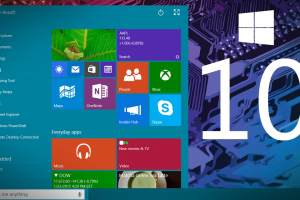Overall growth for Microsoft's Windows 10 has been on the decline since its debut in July, CNET reports. This news follows the release of negative feedback from desktop users who are disgruntled with the latest edition's disregard for privacy and user preference.
CNET reports that Windows 10 currently sits at a 9 percent share worldwide of all Web traffic generated by desktop operating systems in November, up from one point since the previous month and represents a downward trend since it made an initial share of 5.2 percent in August.
The report hints the slow uptake may be blamed on the backlash it endured from Windows 8, which few found user-friendly.
This may not be the only reason for the lackluster response. Forbes reports that though Windows 10 has some interesting features that make it a highly capable platform overall, its sneaky approach to data collection presents cause for privacy concerns.
Likewise, in a previous post, Forbes contributor Gordon Kelly pointed out that Windows 10's default core data collection features may seem unstoppable, especially for the less-than-tech-savvy Windows user.
Windows 10 unrolled its "Threshold 2 update this November, which sported a new and improved set of free upgrade rules. The more interesting aspect of the update is what it has done to the Diagnostic Tracking Service or DiagTrack background service which works silently in the background track your information and sends it back to Microsoft by default.
While DiagTrack gives you the option to disable it, the Threshold 2 update now removes that option simply by completely hiding the feature under a new name - the "Connected User Experiences and Telemetry Service."
The impact of Threshold 2, including its complete re-branding of a silent information-tracking feature, seems worrying, Forbes reports, because:
- The move is misleading as it makes it look like Microsoft has removed the automatic spying feature to appease the many users who find it unsavory;
- The new name is vague enough to throw critics off and allow Microsoft to continue data gathering under stealth;
- The update automatically re-enables the tracking feature without warning;
- Threshold 2 silently deletes third-party system monitoring apps like: CPU-Z, speccy, 8gadgetpack, SpyBot, HWMonitor and more;
- Consumers must receive updates while businesses can delay them. This in effect turns ordinary users into bug testers.
Nevertheless, Kelly finds a way to disable the "Connected User Experiences and Telemetry Service," with the steps outlined here.

















